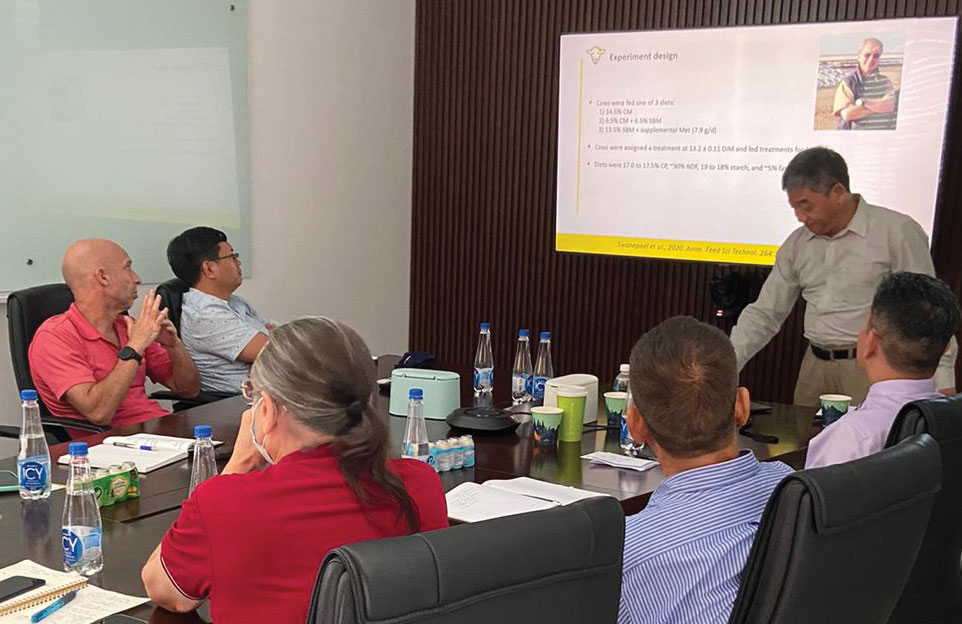Canola Meal Fuels True Happiness in Southeast Asia
Canadian canola processing capacity is set to expand by up to 50 per cent in the next few years as new facilities and expansions come on stream in Saskatchewan. This is exciting news for Canada’s canola industry, with expansion largely driven by high demand for canola oil as both a high quality, nutritious oil and a low carbon feedstock in biofuels. This demand-driven increase in oil production also means increased meal production. While demand for high quality protein ingredients in livestock and aquaculture globally is also increasing, we may have to work a bit harder to ensure Canadian canola meal is properly valued.
Canola meal is a highly valued protein ingredient for dairy cattle rations in the U.S., with the U.S. market taking 60 per cent, on average, of canola meal produced in Canada. China also values Canadian canola meal, primarily as a feed in aquaculture diets. But with Canada set to produce close to an additional three million metric tonnes of canola meal in the coming years, up from five to six million tonnes currently, we need more of these high-value markets. We don’t expect growth in the U.S. dairy market but see definite growth potential in China. Canada’s domestic market is the third biggest for canola meal, with over half a million tonnes staying here for a diversified use, but the forecast is for only modest growth. That means we need ready access to new markets primed to value canola meal accordingly. Enter Southeast Asia.
Southeast Asia is a growing region. From 2011-20, the region exceeded China and India in imports, both in total dollars and annual growth, according to UN Comtrade and ITC. The Canadian government is developing an Indo-Pacific strategy with the stated goals of advancing Canadian interests in a number of areas including trade diversification. And Southeast Asia, which includes Indonesia, Philippines, Thailand and Vietnam, is expected to lead all of Asia in import growth. Livestock industries in Southeast Asia are modernizing and opportunity exists for Canadian canola meal to be highlighted as a high quality protein ingredient.
In late August, I had the opportunity to visit Vietnam as part of a broader mission to build market opportunities for canola meal in Southeast Asia. Since my visit to Vietnam back in 2019, it’s obvious that the feed industry has expanded and the need for high-quality protein ingredients for livestock and aquaculture is apparent. And what a difference visiting in person makes! While virtual meetings have allowed us to continue to engage with people from outside of our country over the last few years, I was reminded of the value gained by meeting people in their element.
Charles Qin, the CCC canola meal representative in Asia, presents canola meal feeding trial results to the Vinamilk nutrition team in Ho Chi Minh, Vietnam.

A mission highlight for me was the visit to TH Milk, just a few hours south of Vinh City in the northern half of Vietnam. This fully integrated dairy company that began from grassroots in 2008, now owns over 70,000 dairy cows spread across 10 farms. The company is owned and managed largely by women who seek, from what I could tell, attention to detail and efficiencies in all management areas. This was clearly evident in their feedmill, where ingredients are closely selected and monitored to ensure they provide high quality nutrients to the cows. With a limited land base to grow feed crops, many feed ingredients need to be imported, including protein ingredients such as canola meal. TH Milk imports 20,000 tonnes of canola meal each year and has keen interest to work with Canadian suppliers and the Canola Council of Canada (CCC) to expand their usage. If you’re curious, TH stands for True Happiness.
Since my visit to Vietnam back in 2019, it’s obvious that the feed industry has expanded and the need for high-quality protein ingredients for livestock and aquaculture is apparent.
While I participated in only the Vietnam visit, the CCC meal mission began in the Philippines, moved to Indonesia, and then Vietnam. The mission included the Philippines Livestock Expo in Manila, Faculty of Animal Science at IPB University in Bogor, Indonesia, and Vinamilk in Ho Chi Minh City, Vietnam. Plans are also underway to visit Thailand in the coming months. Charles Qin, the CCC canola meal representative in Asia, completed the full mission. In planning the mission, we engaged with Canada’s trade commissioner service in each country.
While we may not see exports of canola meal to these countries in the short term, the utilization program at the CCC is designed to build value and opportunity over the long term to support exports of canola products. We’ll continue to build relationships and share information with our established contacts.






